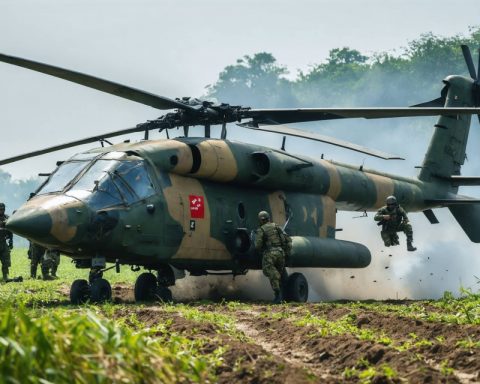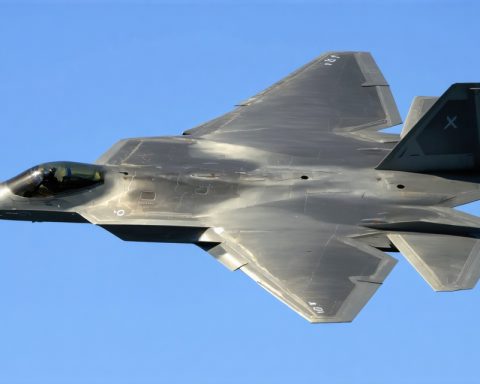- A tragic incident revealed potential vulnerabilities in Ukraine’s new F-16 fighter jet operations, highlighting coordination gaps that could lead to friendly fire.
- The lack of Link 16, a crucial communication system, between Ukraine’s Patriot air defenses and F-16s is a significant oversight impeding real-time identification of friendly and hostile forces.
- Despite acquiring US-made F-16s to bolster defense, Ukraine’s integration of modern technology lacks a vital network interface to prevent misunderstandings.
- As new aircraft are celebrated, questions linger regarding the seamless interoperability of defense systems in combat conditions.
- Ongoing negotiations aim to resolve these communication deficiencies, emphasizing the need for meticulous integration in defense modernization.
- The incident serves as a critical reminder that preventing miscommunication is crucial in safeguarding against technology-related mishaps.
Amid the whirr of jet engines and the crackle of radio chatter, a shadow looms over Ukraine’s fledgling squadron of F-16 fighter jets. In a grim twist, a tragic incident that claimed the life of pilot Oleksii Mes, call sign “Moonfish,” may reveal cracks in the very systems designed to safeguard against friendly fire.
This tragedy hints at a perilous gap in coordination, one possibly rooted in the absence of Link 16—a vital communication link between Ukraine’s Patriot air defense systems and its new fleet of F-16s. This oversight, described by informed sources, has reportedly left pilots without a real-time understanding of friend or foe in their high-stakes engagements against Russian aerial incursions.
When Ukraine secured its first shipment of US-made F-16s, hopes soared for a strengthened aerial defense. Yet, the technological handoff overlooked a key component: a network interface capable of preventing tragic misunderstandings. As Ukrainian forces scramble to adapt pre-existing equipment to the swift intake of modern war technology, a chink has emerged in the armor of a well-intentioned alliance.
The stakes could not be higher. Ukrainian President Volodymyr Zelensky acknowledges each incoming F-16 with fanfare, but even amidst these celebrations, questions arise about whether the systems can cooperate seamlessly in real battle conditions.
While negotiations to address the missing Link 16 continue behind closed doors, the incident underscores an essential lesson for any nation modernizing its defense apparatus: integration must be seamless, and caution may often masquerade as prudence.
As the specter of friendly fire remains, Ukrainian experts and international partners must navigate this intricate dance, striving to prevent technology from becoming a weapon turned against its own. For Ukraine, achieving this delicate balance is not just a tactical necessity but a step toward securing its skies.
How F-16 Communication Gaps Threaten Ukraine’s Aerial Defense
Understanding Link 16 and Its Importance
Link 16 Overview:
Link 16 is a military tactical data exchange network used by NATO and allied forces. It provides a secure, jam-resistant, and near real-time communication channel that enables data exchange among air, ground, and sea platforms. Link 16’s capabilities include sharing situational awareness and command and control information, thus preventing incidents of friendly fire.
Why Link 16 Matters:
The absence of Link 16 integration in Ukraine’s defense network means their F-16 fighter jets lack the critical ability to distinguish allies from adversaries reliably. Without this, the risk of misidentifying targets in hostile skies is significantly increased, posing a danger to pilots and ground forces alike.
Real-World Use Cases
Effective Combat Coordination:
In combat zones, the ability to share real-time data is crucial. US and NATO forces regularly utilize Link 16 systems to manage airspace efficiently, reducing the probability of friendly fire. The US Air Force and Navy have demonstrated the system’s effectiveness in synchronized operations worldwide.
Features, Specs & Pricing
Key Features of Link 16:
– Secure Data Link: Encryption protocols ensure secure communications.
– Jam-Resistance: Designed to withstand electronic warfare attacks.
– Scalability: Capable of integrating multiple platforms, from jets to ground units.
Pricing Considerations:
Implementing Link 16 involves substantial investment in hardware and software upgrades, along with training personnel, making it a significant financial commitment for nations modernizing their defense capabilities.
Controversies & Limitations
Integration Challenges:
One major limitation is the complexity of integrating Link 16 with legacy systems. Existing equipment must often be modified or replaced to accommodate the new network architecture, a costly and time-consuming process.
Geopolitical Concerns:
There are also geopolitical dimensions; sharing such advanced technology can create dependencies and require trust between collaborating nations.
Insights & Predictions
Future Defense Modernization:
As defense technologies evolve, the trend leans towards more networked and interoperable systems. Militaries worldwide are expected to invest in adaptable communication technologies, ensuring seamless integration and enhanced situational awareness. Ukraine’s current predicament might serve as a critical case study for other countries embarking on defense modernization efforts.
Actionable Recommendations
– Conduct Thorough Systems Audits: Nations looking to upgrade military hardware should prioritize comprehensive audits to ensure compatibility between new and existing systems.
– Invest in Training: Properly training personnel in new systems can mitigate risks during transition periods significantly.
– Engage with Allies: Open dialogue with allies about technology sharing can streamline integration and improve interoperability, avoiding the gaps seen in Ukraine’s defense network.
For more information on military communications systems and defense technology, consider visiting NATO.
By addressing these concerns proactively, countries can strengthen their defense systems and avoid pitfalls similar to those currently faced by Ukraine.







